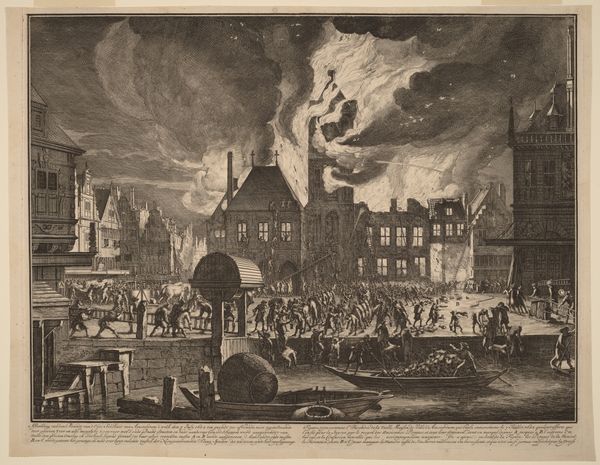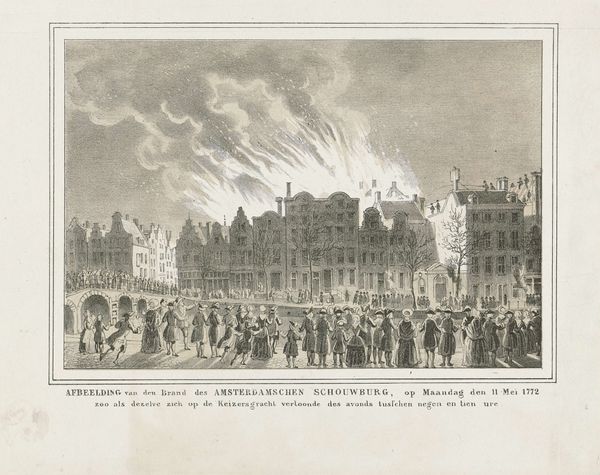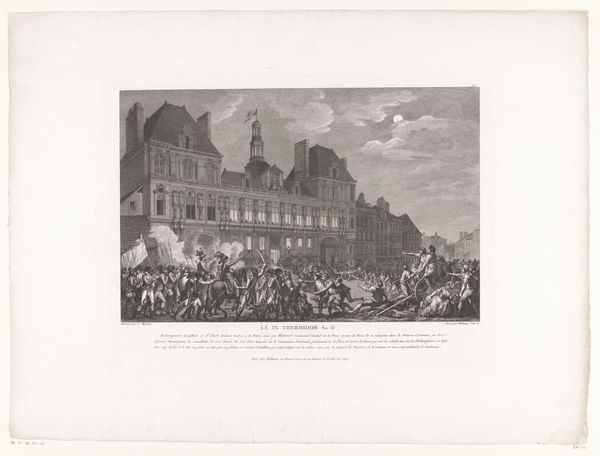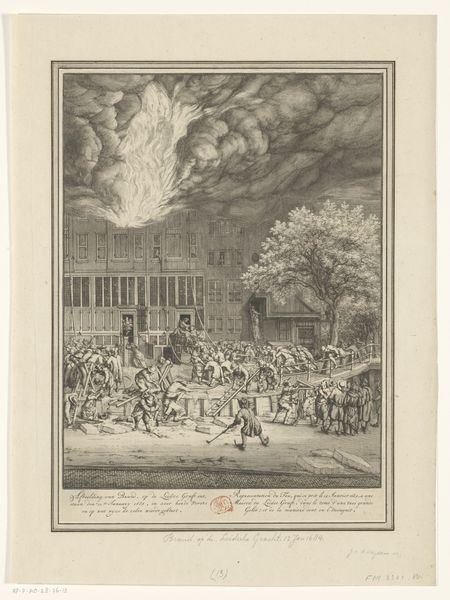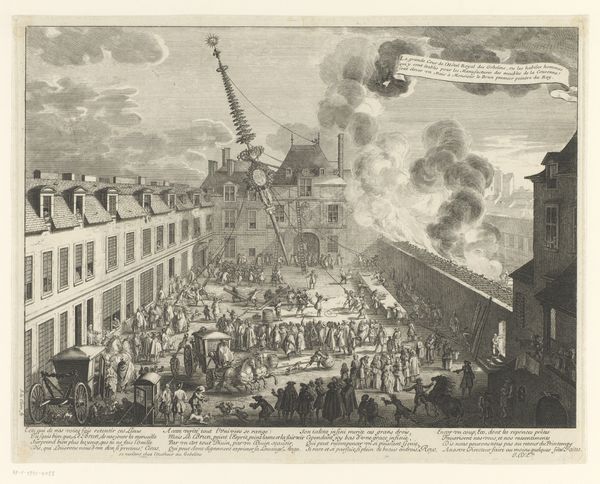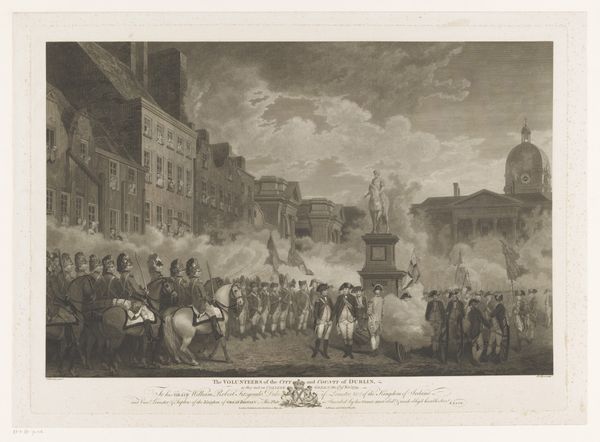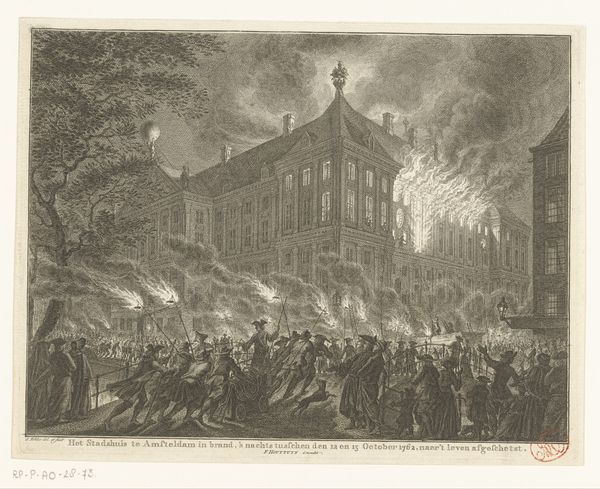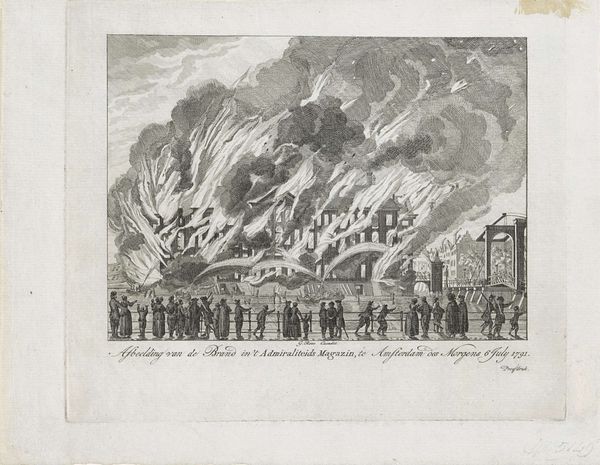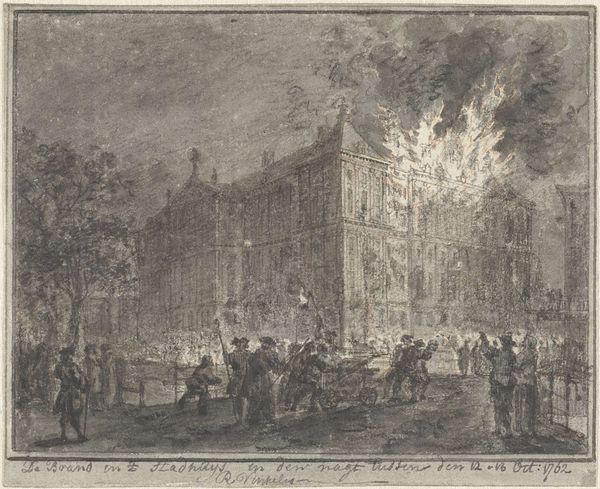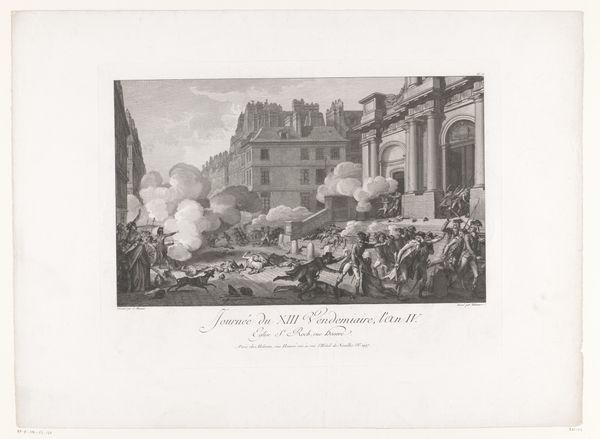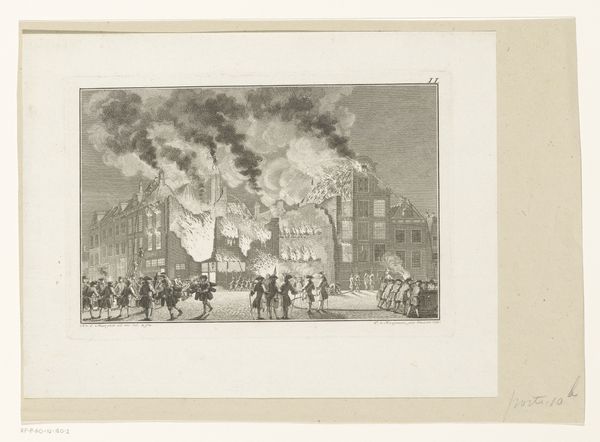
drawing, print, etching, paper
#
drawing
#
ink paper printed
# print
#
etching
#
paper
#
romanticism
#
france
#
cityscape
#
history-painting
Dimensions: 177 × 268 mm (image); 266 × 334 mm (plate); 317 × 502 mm (sheet)
Copyright: Public Domain
Curator: "Fire in the Guard House on the Pont Neuf," created between 1798 and 1804 by Claude Niquet, uses etching, ink, and paper to portray quite the dramatic cityscape. Editor: My initial impression is chaos. The sky's a furious scribble, mirroring the turmoil below. And that contrast between the dark figures in the foreground and the raging fire...it's masterful. Curator: The etching technique really enhances that drama. The density of the lines creates this incredible sense of depth, especially in the billowing smoke and the crowd gathered below. Consider the formal composition: how the architectural lines create a visual anchor to this anarchic spectacle. Editor: It’s more than just aesthetics, though. Placing the event on the Pont Neuf, such a historically and symbolically charged location, elevates this to commentary. The guardhouse itself, burning… is this a symbol of crumbling authority in post-Revolutionary France? Curator: Precisely. The print exists as a political document. What can you decode from the subjects displayed and where they were placed in relation to one another and elements in the artwork, as a whole? The artist cleverly manipulates spatial depth to enhance the themes. Editor: And what about the figures themselves? Notice how they’re all moving in different directions? The body language seems restless. The political and social unrest of the period following the French Revolution and into the Napoleonic era makes it palpable. Was it printed as pure spectacle, or was it subtly nudging people toward a particular perspective on that unrest? Curator: That question is vital. Considering where and when it was created is important. This artwork serves as an archive of societal struggle; and as an artwork it illustrates effective line usage and dramatic interplay with a restricted range of greyscale tonal values. Editor: Seeing how these techniques visually translate historical upheaval gives me pause. So, art reflects—and refracts—life. Curator: And through thoughtful artistic arrangement, an argument can also be effectively communicated through images.
Comments
No comments
Be the first to comment and join the conversation on the ultimate creative platform.
